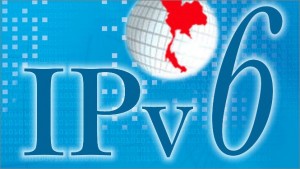In a public ceremony in Miami, the Internet Assigned Numbers Authority handed out the last five remaining IPv4 address blocks to the regional organizations. The IPv6 transition has begun.

The gradual transition to Internet Protocol version 6 (IPv6) has official begun with the distribution of the last five remaining IPv4 address blocks to each regional organization overseeing the net address assignments.
The official distribution took place in a ceremony to mark the occasion in Miami on Feb. 3. AfriNIC, the regional Internet registry that oversees IP address allocation in Africa, received the first of the remaining IPv4 blocks, followed by Asia Pacific Network Information Center (APNIC), American Registry of Internet Numbers (ARIN), for North America, and Latin American and Caribbean Internet Addresses Registry (LACNIC). The RIR for Europe and Middle East, RIPE NCC, received the final block 185/8, marking the end of available addresses under the current IPv4 system.
“A pool of more than 4 billion Internet addresses has just been emptied this morning; completely depleted,” said Rod Beckstrom, president and CEO of ICANN (Internet corporation for Assigned Names and Numbers) on a panel at a press conference following the ceremony. “There are no more,” he said. Raul Echeberria, chair of the Number Resource Orgnaization (NRO), Lynn St. Amour, president and CEO of the Internet Society, and Olaf Kolkman, chair of Internet Architecture Board joined Beckstrom on the panel.
APNIC requested and received two blocks of addresses from the Internet Assigned Numbers Authority (IANA) on Feb. 1. The assignment triggered an ICANN rule which stated that when only five blocks of addresses remain in the centralized pool, they will be automatically assigned to each RIR.
Each regional authority have their own policies and rules for how these addresses will be allocated, and each region will run out at different times, according to St. Amour. North America’s fresh supply of IPv4 addresses will probably last only three to nine months, said John Curran, president and CEO of ARIN. Faced with explosive economic growth in the Asia-Pacific region, APNIC is also expected to run through the blocks it received earlier this week fairly quickly, prompting the organization to implement new rules.
APNIC will restrict address assignments to the “smallest allocations” to ensure the final block lasts five to ten years, said Paul Wilson, APNIC’s Director General. “The transition to IPv6 should be well underway by then,” he said at the press conference.
IPv4 address exhaustion was “both significant and insignificant,” said Kolkman. Significant because even though it was long anticipated, it marked the end of the existing system, but insignificant because “next week, the Internet won’t be significantly different from today,” he said. He likened the situation to running out of license plates. “We will still drive,” he said.
Vint Cerf, Google’s current chief Internet evangelist and “father of the Internet” selected the 32-bit system in 1977 because he thought a pool of 4.3 billion possible IP addresses would be “enough to do an experiment,” according to Beckstrom. Not only has the experiment not ended, there are more possibilities, including refrigerators that send out alerts when out of milk and cars that are wireless hotspots on wheels, Beckstrom said.
With the depletion of IPv4 addresses, the next batch of addresses that will be available from IANA will be IPv6 addresses, which utilizes the 128-bit system and has over 340 undecillion possible addresses. The transition was a “generational” change, said St. Amour. “The previous generation won’t go away, and it will still have a lot to contribute, but the future is IPv6,” she said.
Citing no “imminent danger” to the Internet, Kolkman said devices with IPv4 will be around for at least “a decade, two decades” but that IPv6 will account for a majority of the systems within a decade. It will take time for the legacy systems to migrate, he said.
The rate of IPv6 adoption hasn’t been as fast because “there have still been IPv4 addresses,” Echeberria joked. However, IPv6 requires investment and effort, he said.
“Ordinary users shouldn’t notice the transition to IPv6,” as it will be the responsibility of the network operators, Kolkman said. Most devices are already IPv6-capable, he said.
While there are approximately two billion people online, there are “not enough addresses” in the IPv4 system to bring the remainder of the six billion online, Kolkman said. The next two to three billion people who will be coming online will run IPv6 only and businesses and services who don’t make the transition to the new address system “won’t be able to do business” with them, he said.
Internet stakeholders, such as governments with e-services, need to invest in IPv6 or face the prospect of not reaching their citizenry, said Echeberria.
There is no extra cost for organizations to switch to IPv6 since organization have known about it and “we’ve been doing deployments already,” said ARIN’s John Curran. Turning on IPv6 doesn’t cost more, since it’s “usually just a configuration change” and it’s part of the normal business costs of new deployments, he said. Organizations have to switch to thinking about IPv6 and including it in the normal course of planning new projects, he said.
“The question is not what’s the cost of doing IPv6, but what’s the cost of not doing IPv6,” said Adiel Akplogan, AfriNIC’s CEO.